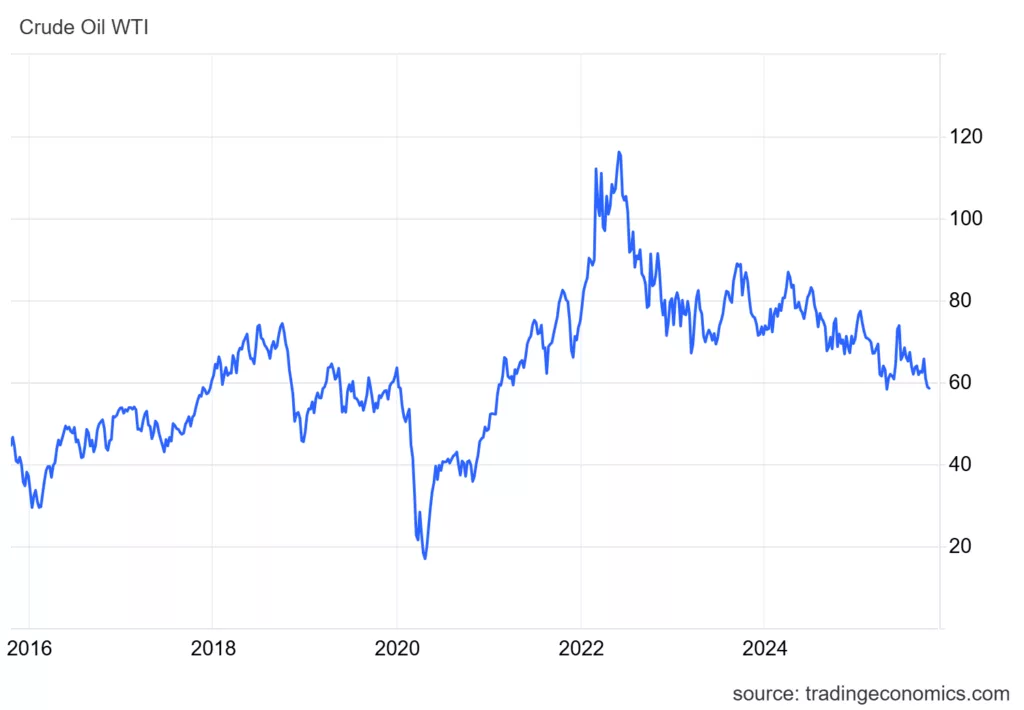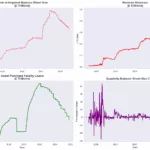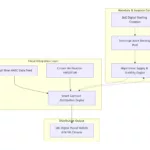Global commodity markets in 2025 have been defined by significant divergence, with safe-haven assets like gold reaching record highs while industrial commodities and energy face headwinds from oversupply and moderated demand. This volatility is driven by a complex interplay of macroeconomic policies, geopolitical tensions, and supply chain developments, creating a challenging yet opportunistic environment for traders.
Market Picture: A Tale of Two Trends
The commodity landscape is currently split, reflecting a market grappling with uncertainty. Your observations are consistent with broader 2025 forecasts, which highlight a clear divide between different commodity classes. Gold has emerged as a top performer, appreciating over 25% in 2024 and continuing its bullish run into 2025. This surge is largely attributed to its role as a protective asset amid economic uncertainty, fueled by U.S. Federal Reserve policies and ongoing purchases by central banks . Investors are seeking stability, and gold is providing it.
| Commodity | Price | Day Change | Weekly Change | Chart Link |
|---|---|---|---|---|
| Canola | 621.29 CAD | +0.29% | +0.71% | Canola Chart |
| Oat | 293.28 USD | +0.10% | -0.84% | Oat Chart |
| Sugar | 15.69 USD | -1.20% | -3.68% | Sugar Chart |
| Cocoa | 5809 USD | -1.53% | -3.18% | Cocoa Chart |
| Lead | 1989.45 USD | +0.11% | -2.05% | Lead Chart |
| Aluminum | 2747.05 USD | +0.03% | -0.43% | Aluminum Chart |
| Tin | 35189 USD | -1.50% | -3.70% | Tin Chart |
| Iron Ore | 105 USD | — | — | Iron Ore Chart |
| Gold | — | New High | — | Gold Chart |
Conversely, oil prices have slumped due to oversupply concerns. The market is expected to remain in surplus, with ample supply and only gradual growth in global demand. Analysts from several banks forecast average prices in the $65-70 per barrel range, citing muted demand—particularly from China, and steady output from OPEC+ and non-OPEC exporters like the US and Canada . However, the Crude Oil market has taken a significant , which is crucial for understanding the context for energy stocks. WTI Oil prices have fallen to their lowest levels in five months, with WTI crude dipping toward $58 per barrel, while the International Energy Agency (IEA) has warned of an unprecedented surplus, with supply projected to exceed demand by nearly 4 million barrels per day in 2026 . This is fueled by rising output from OPEC+ and robust production from the Americas .
Industrial Metals Global Demand
The base metals market faces a mixed outlook. While demand from sectors like construction and renewable energy remains, moderate industrial growth in major economies like China is likely to keep prices for metals such as aluminum and copper stable or slightly declining. This is a dominant bullish factor for copper and aluminum. Each battery-electric vehicle requires over 50 kg of copper, and renewable installations like offshore wind need up to 8 tonnes of copper per megawatt. Aluminum is also seeing increased demand from these sectors for its lightweight and conductive properties, alhough supply has been constrained by production caps in China and high energy costs in Europe. Supply disruptions are a major theme, particularly for copper. Recent incidents at the Grasberg and El Teniente mines have significantly reduced projected output, tightening the market and providing a floor under price.The “double-edged sword” of tariffs is a critical factor. While U.S. tariffs on aluminum have created a record-high domestic premium, widespread trade tensions risk disrupting global economic activity and weakening overall demand for industrial metals.
| Commodity | Current Price & Context | Price Forecast & Key Drivers | Chart & Forecast Link |
|---|---|---|---|
| Aluminum | ~ $2,684.5/tonne (Oct 16, 2025). LME inventories rose sharply in July, signaling potential surplus or soft spot demand. 2025 average: $2,625-$2,800/tonne. | Bullish outlook with an expected supply deficit of 400k-600k tonnes driven by Chinese production caps, high energy costs, and strong demand from EVs & renewables. US tariffs keep the domestic premium elevated. | Goldman Sachs Aluminum Forecast |
| Copper | ~ $4.96/lb ($10,900/tonne) Oct 16, 2025. Prices remain high but volatile. 2025 average forecast: ~$9,572-$9,650/tonne. | Structurally bullish due to strong green energy demand (EVs, solar) and ongoing supply disruptions at key mines (e.g., Grasberg). Long-term price forecasts point to $17,000/tonne by 2034, driven by chronic deficits. | Fitch BMI Copper Outlook |
| Iron Ore | ~ $105.55/tonne (Oct 15, 2025), recovering from lows near $89 in late 2024. | Challenged outlook with downside risks due to a 9.2% YoY drop in Chinese steel output and a persistent property crisis weakening demand. Market fundamentally imbalanced with supply exceeding demand. 12-month forecast ~ $101/tonne. | Iron Ore Price Chart & Analysis, Goldman Sachs Iron Ore Forecast |
Soft Commodities Market
The agricultural sector shows mixed fortunes. While some staples may see price declines as global production rebounds, commodities like cocoa and coffee are expected to remain volatile due to adverse weather conditions in key producing regions and ongoing supply concerns .

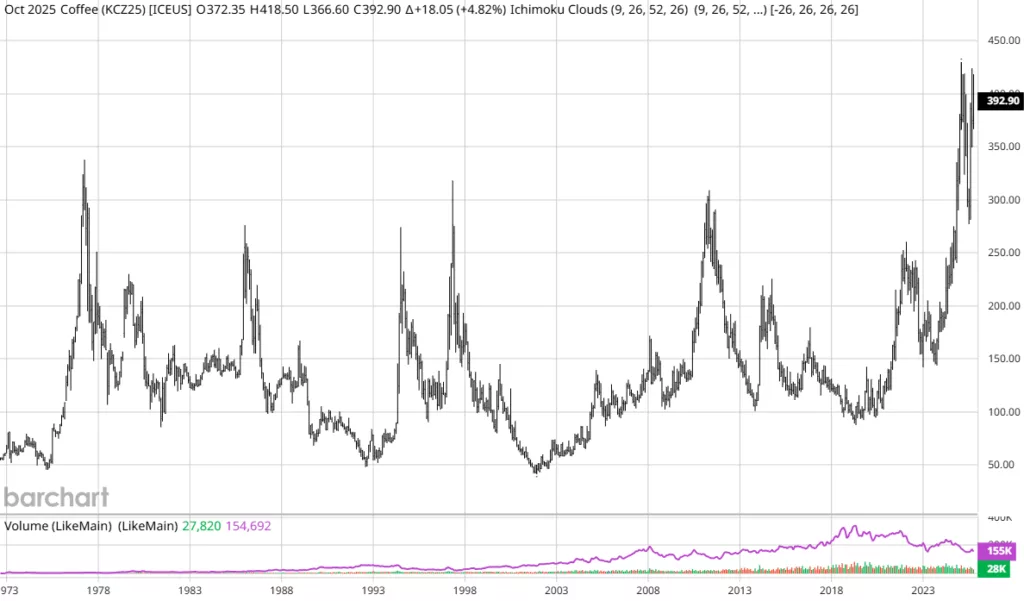

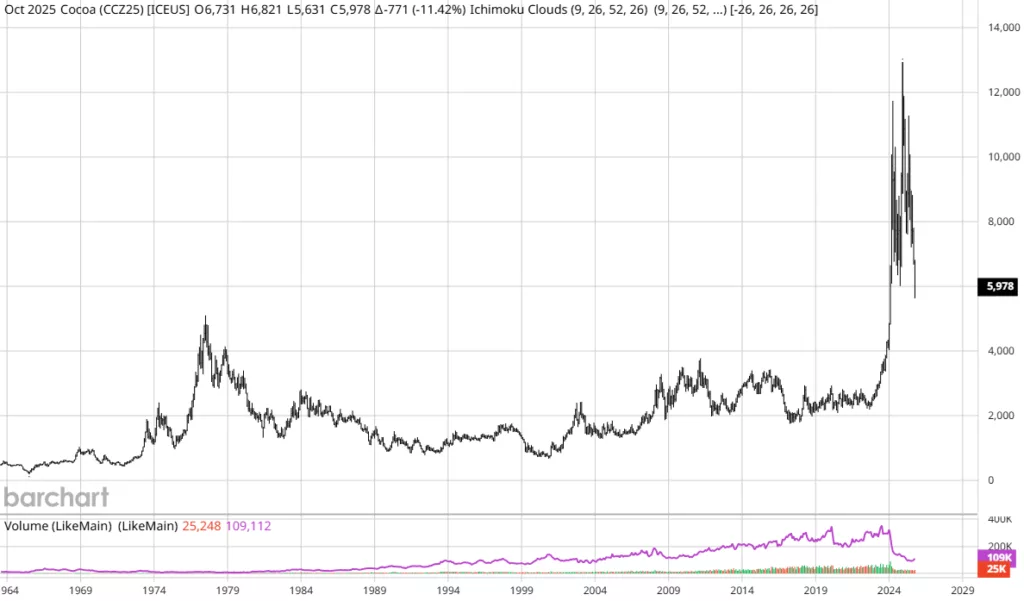
Trader Outlook & Market Positioning on Energy Stocks
Prevailing portfolio managers outlook is cautious. The combination of a major supply overhang and threats to demand growth creates a fundamentally bearish short-term narrative for the oil sector . This environment is leading to a reduction in risk exposure, with reports noting a significant decline in open interest in crude oil markets, suggesting money is flowing out of the sector . In terms of market positioning, the focus has shifted toward quality and fundamental strength. Traders and investors are likely using this period of low prices and sector underperformance to identify high-quality companies with resilient balance sheets. One approach is to screen for energy stocks based on strong value and profitability metrics. The following table lists energy stocks that were identified in mid-2025 as scoring well on such fundamental factors :
| Ticker | Company Name | Market Cap ($mil) | P/E Ratio | Dividend Yield | Link |
|---|---|---|---|---|---|
| XOM | Exxon Mobil Corp | 466,945 | 15.9 | 3.6% | XOM Stock |
| CVX | Chevron Corp | 250,742 | 19.6 | 4.4% | CVX Stock |
| TTE | TotalEnergies SE | 138,637 | 10.9 | 6.3% | TTE Stock |
| EQNR | Equinor ASA | 71,149 | 7.6 | 9.8% | EQNR Stock |
| SU | Suncor Energy Inc | 46,821 | 10.9 | 4.2% | SU Stock |
| CVE | Cenovus Energy Inc | 24,797 | 12.5 | 4.5% | CVE Stock |
This focus on quality is reinforced by a broader strategic repositioning within the energy industry itself. Major players are pulling back from renewables and doubling down on their most profitable legacy oil and gas assets, and there is a notable trend of industry consolidation (e.g., speculation around a Shell/BP merger) as firms seek scale and efficiency . This corporate behavior suggests that the industry is battening down the hatches for a period of lower prices, a signal that traders would likely factor into their models.
Macroeconomic Drivers: What’s Moving the Market
Several powerful macroeconomic forces are shaping the commodity markets that CBOE traders navigate daily. The US administration’s promise of sweeping tariffs has introduced significant uncertainty. For commodities, this could lead to increased costs, supply chain disruptions, and market volatility. ING’s commodities outlook suggests that grains are particularly at risk of getting caught in trade friction, potentially leading to retaliatory tariffs that pressure US agricultural exports. A stronger US dollar, often a result of such policies, could also mean lower prices for all dollar-denominated commodities .
As the world’s largest consumer of many raw materials, China’s economic health is paramount. Efforts to stimulate its economy have had profound consequences for commodities in the past. Success in boosting growth could support prices for crude oil, aluminum, copper, and key agricultural products. However, if stimulus falls short, it would leave oil and metals markets “looser,” maintaining downward pressure on prices .The market is transitioning from a period of energy scarcity to one of abundance. Rystad Energy notes that growing output from both renewables and fossil fuels is outpacing increases in demand. In this environment, OPEC+ may need to extend production cuts far into 2025 to protect oil prices, signaling a fundamentally new era for energy markets .
CBOE Trader Focus
While the provided search results do not contain direct quotes from CBOE traders on commodity price directions, they reveal the strategic posture and areas of focus for CBOE Global Markets as an exchange operator. The performance and strategic priorities of the exchange itself offer a window into the trading environment and the products seeing the most activity. The company’s exceptional financial performance in Q2 2025—with record net revenue of $587.3 million and a 14% year-over-year increase—was driven by robust volumes across its derivatives franchise, particularly in index options . This activity provides clues to what is engaging the trading community.
CBOE’s CEO, Craig Donahue, highlighted the “increasing sophistication of retail traders,” noting that as their knowledge grows, “they move into the index option complex” . This indicates a trading environment where participants, from institutions to retail, are actively using more complex derivatives to express views and hedge risks in this volatile commodity climate. The record trading volumes in products like SPX options, especially during periods of market stress in April 2025, demonstrate that traders are not shying away from volatility but are actively trading it .
A trend within CBOE is the explosive growth of zero-day-to-expiration (Zero-DTE) options. These short-dated instruments accounted for a record 57% of overall SPX options volume in Q2 2025 . While these are equity index products, their popularity signals a broader trader preference for instruments that allow for precise, short-term positioning in response to rapid changes in macroeconomic data, geopolitical events, and commodity-specific news. CBOE is focusing on international expansion and education to capitalize on these trends. The company notes “encouraging signs from international brokers,” who are extending trading hours and increasing functionality for trading CBOE’s proprietary index products . For commodity traders, this suggests a global marketplace that is becoming more accessible and interconnected, requiring an awareness of international developments and round-the-clock trading opportunities.
The commodity markets of 2025 are a study in contrasts. Gold’s record highs reflect deep-seated investor caution, while slumping oil prices signal concerns over oversupply and demand. For traders, this environment demands vigilance and adaptability. Key themes to watch for the remainder of the year will be the real-world impact of US trade policies, the effectiveness of China’s economic stimulus, and the ongoing discipline of OPEC+ in managing oil supply. Furthermore, agricultural commodities will remain highly susceptible to unpredictable weather patterns. The intense activity on exchanges like CBOE confirms that while the path ahead is complex, it is full of opportunity. Traders are responding by leveraging a more sophisticated toolkit of derivatives and index products to navigate the crosscurrents of geopolitical shifts, supply chain developments, and macroeconomic policy.
